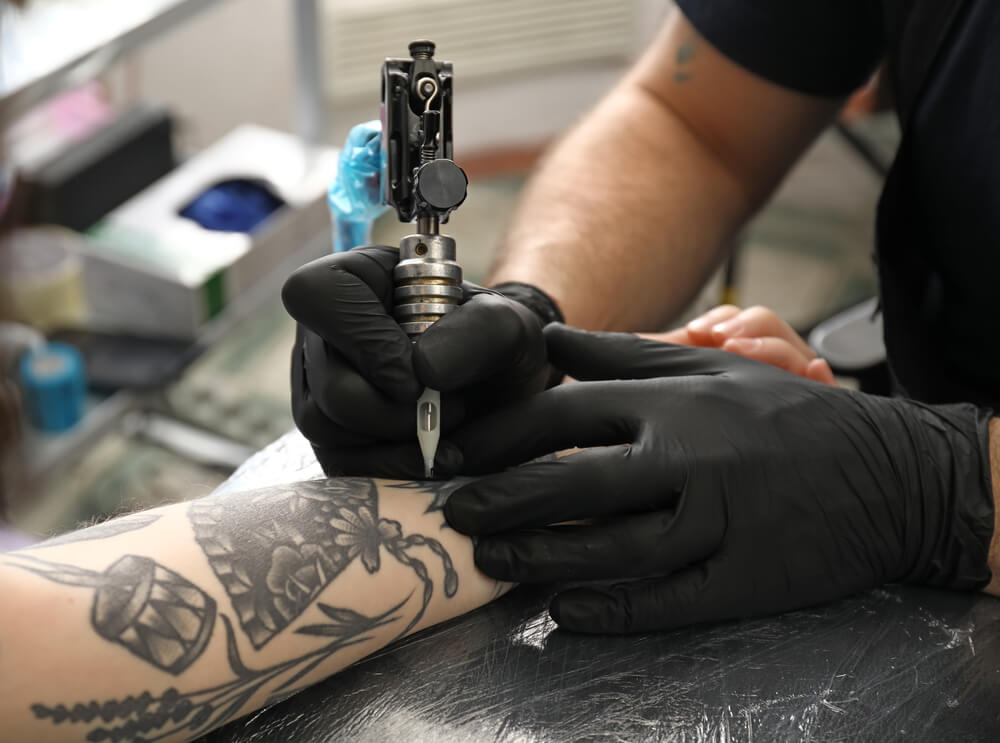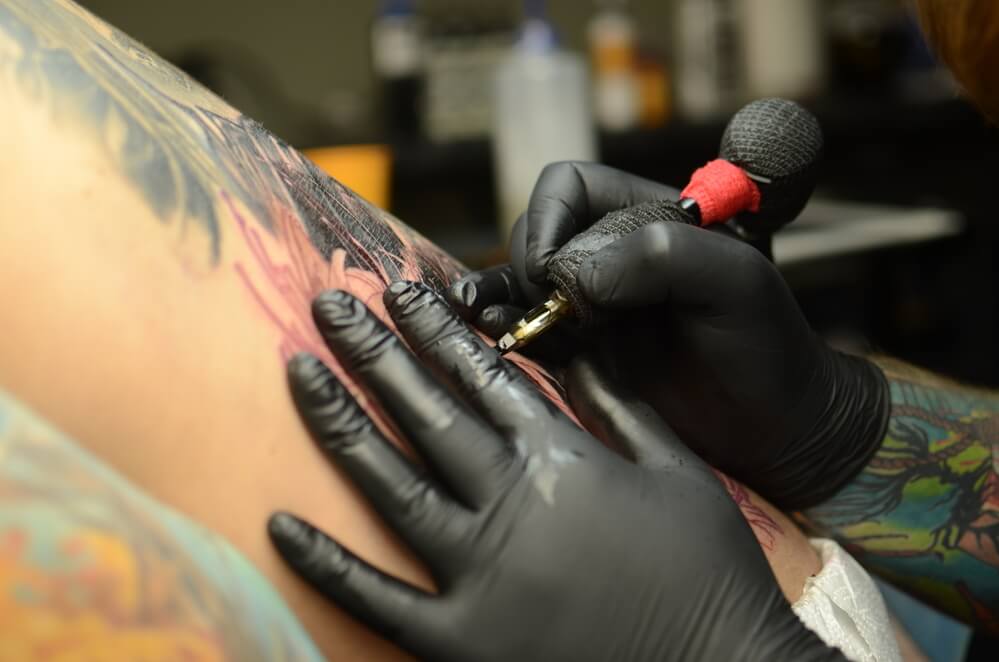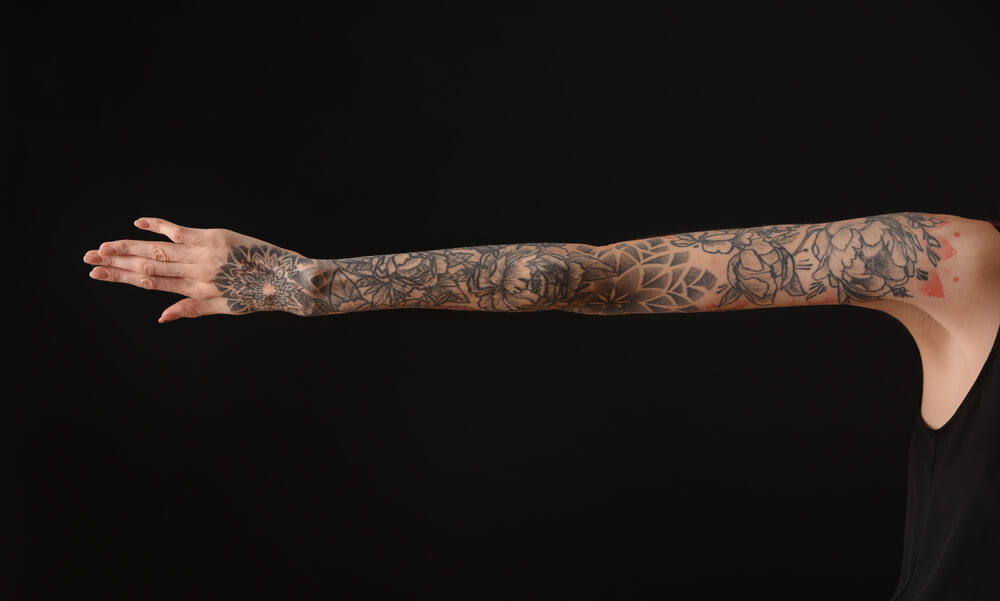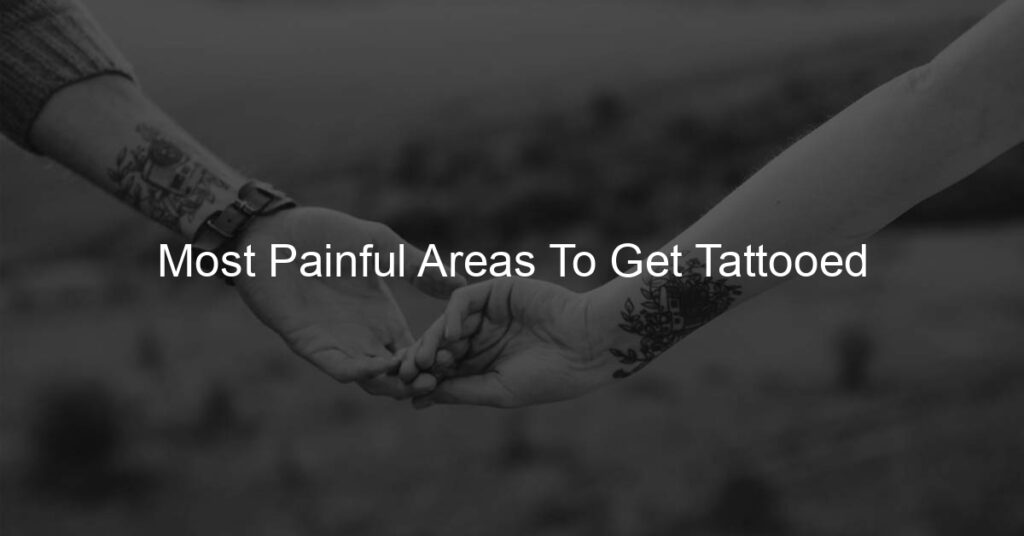When it comes to tattoos, we all know that pain is something that has to be expected. But when exactly does the hurt come, and where are the most painful areas for a tattoo? Let us take you on an exploration of what locations cause the highest level of discomfort during this inking process.
We will look at why certain body parts elicit more aches than others and provide tips on how best to minimize any unpleasantness while getting your design done. Not only shall we examine which spots usually feel worse, but also provide some calmer options if desired!
Key Takeaways
- This article provides a comprehensive guide to the most painful areas of the body for tattoos and explains factors that influence pain levels.
- Tips are provided on how to reduce tattoo pain during and after your session, as well as advice on selecting an experienced artist.
- The least painful locations for getting a tattoo depend upon individual tolerance. However, Areas with thick skin & few nerve endings are recommended.
The Top 10 Most Painful Tattoo Locations

Many experienced tattoo enthusiasts know there are some areas of the body that inflict more pain during a session in a studio than in other spots. What makes these regions so difficult to work on? It depends upon several components, which include proximity to bone or tendon tissue, skin thickness, and the amount of nerve endings present in those locations.
To help you understand how painful different parts can be when getting decorated with ink and hopefully avoid regrettable decisions about where your design should go, we’ve created this list of the 10 most unendurable places for tattoos.
From ribs to faces, all will require high levels of commitment from both artists, making it real as well as its wearer, who has decided not to flinch at the cost!
A Tattoo Pain Chart provides invaluable information about varying degrees of agony inflicted by needling specific zones.
When prepping yourself mentally (and physically!), get familiar with what kind of torture awaits every anatomical area mentioned here: ribcage, spine, inner arm/thigh, neck elbow, knee, foot, hand & face, respectively. Be aware, though, that none is for wimps; thus, think twice before taking such an enduring decision.
Armpits
Getting a tattoo in the armpit is considered by many as an incredibly painful endeavor due to its high concentration of nerve endings, and not one recommended for those with low pain tolerance. Most tattoo artists suggest avoiding this area since it will have an even longer healing process, given the presence of glands and lymph nodes nearby that can increase discomfort.
With all things said, anyone brave enough to go through with getting their skin pierced there should prepare themselves for 9/10 on the scale when it comes to feeling hurt – something clearly out of reach if you’re looking at making this decision lightly.
Ribs and Chest
Getting a tattoo on your ribs or chest can be quite painful, as the thin skin and few nerve endings present in these areas amplify sensations from the needle. It usually ranges around 7 to 8 out of 10 when it comes to pain level.
If you’re thinking about having one done, then make sure that proper aftercare precautions are taken, such as wearing loose clothing for optimal comfort afterward.
Stomach

Getting a stomach tattoo can be quite an addition to your body art portfolio, but it may come with higher levels of discomfort.
Evaluations have deemed the pain related to this type of tattoo between 5 and 7 out of 10. Gender, physique, and fat accumulation in the area are just some aspects that could impact how much you feel during the process. So if you are considering having one done at this location, pay attention: there might be extra challenges awaiting!
Face and Ears
Tattooing the face and ears is not for those who lack fortitude. Due to there being a lot of nerve endings in this area with no fat protecting them, it can be an extremely painful experience when getting these tattoos done.
When felt on your skin, the needle used creates vibrations that induce intense pain, making it hard to withstand such discomfort.
For example, lip tattoos rank 8 out of 10 on a pain scale. So if you are planning any facial or ear ink, prepare yourself mentally for all sorts of sensations accompanied by aches brought upon by tattoo application.
Groin and Genital Area
Those considering getting a tattoo in the groin or genital area must be prepared to endure an extremely painful experience.
The region is particularly sensitive due to its high concentration of nerve endings and lymph nodes, making it especially challenging for the artist performing such work. These same nerves and nodes also amplify pain levels experienced during this type of procedure.
Elbows and Knees
The discomfort level associated with elbow and knee tattoos is often rated as high due to the proximity of bones in these regions, resulting from a lack of fat growth. Speaking, getting tattooed on your knees tends to be one of the most painful experiences, given all the connective tissues around it.
If you have low pain tolerance but still wish to adorn yourself with body art through tattoos on delicate areas such as elbows or knees, then prepare yourself for some serious suffering; bear this warning in mind before deciding whether or not to proceed down that route!
Hands and Fingers
Getting a tattoo on your hands or fingers can be quite excruciating due to the abundance of nerve endings in that area and its constant movement.
It is estimated that hand and finger tattoos register around 8 out of 10 as far as pain levels go, including spasms caused by contact between needles used for the artwork and nerves located there. Don’t let this dissuade you from using body art to express yourself – despite being painful, sometimes it’s totally worth it!
Neck and Spine
When considering getting a neck or spine tattoo, finding an expert tattoo artist who can handle the discomfort is important. Speaking, this type of inkwork involves around 7 out of 10 on the pain scale. Nevertheless, proper post-tattoo aftercare practices, it will allow for less painful healing progress and remarkable visuals in return.
Head and Scalp
Getting head or scalp tattoos is a great way to show how devoted you are to body art. It comes with severe pain. The thin layers of skin and close distance from the ear make this tattoo experience especially tough. Acquiring a head tattoo can be unbearable for those who are not used to high levels of discomfort.
Using numbing cream such as Zensa Numbing Cream before going through with the procedure is suggested in order to help lessen any sensation of agony during the process itself. By doing so, getting that desired piece will turn into an easier feat!
Factors Affecting Tattoo Pain
Navigating the most painful tattoo placements necessitates having a grasp on how pain is subjective and can be swayed by several elements.
Pain tolerance, sex, age, weight, and whereabouts of your body are all components that may affect one’s experience when getting inked. For example, females might have an increased sensation of intense agony across their stomach area or breasts, which could differ for men experiencing it elsewhere.
When selecting where to get tattoos done, it is important to understand these aspects. Finding a professional artist who understands well working with customers through the procedure whilst minimizing discomfort as best they can.
Having awareness about what causes skin sensitivity lets you better prepare yourself for any Experiences with making art permanent, and knowledge really does equal power here!
Tips for Reducing Tattoo Pain
Pain associated with a tattoo session can be minimized by using Zensa Numbing Cream, which contains lidocaine to provide maximum strength and pain relief.
Other than this, one can reduce their stress and anxiety before getting inked. Deep breathing exercises, playing soothing music, or talking about any worries beforehand are all beneficial strategies for achieving greater comfort during the procedure. Breaks should also be taken throughout the process to help manage discomfort as much as possible.
Least Painful Tattoo Locations
The intense pain involved in body art can be intimidating, but there are certain parts of the body where getting a tattoo is more comfortable due to having fewer nerve endings and thick skin. Such least painful spots include the upper outer thigh, forearm, bicep area, calves, and outside shoulders.
Everyone’s tolerance for discomfort differs, though, so if you want an enjoyable experience, then selecting an experienced tattoo artist who knows how best to deal with potential hurt from being inked should not be overlooked.
Ultimately one must take into consideration one’s own individual threshold when it comes down to deciding whether or not they’re capable of enduring said act. There definitely areas that help make this entire process significantly easier!

Choosing the Right Tattoo Artist
When choosing a tattoo artist, it is vital to select someone experienced in order to ensure comfort and reduce the feeling of pain during your session.
Their proficiency level, specializations, professionalism when communicating with you as well as their cleanliness, should all be taken into consideration before making any decisions. Asking friends or family for referrals can also prove helpful.
A good quality artist has the potential not only to create gorgeous body art but also to handle levels of sensitivity appropriately while doing so. Picking an appropriate specialist that meets all these needs is key to creating optimal results from this experience.
Preparing for Your Tattoo Session
Preparing adequately is vital for a pleasant and successful tattoo session. It’s advisable to get adequate rest, stay hydrated by drinking lots of water, and eat properly before the appointment, as this helps your body cope better with any discomfort during the procedure.
Before your scheduled session, it is important that you make sure your skin stays moisturized so it remains healthy while also making sure to have a clean shower, all part of protecting yourself against possible infections after the inking has taken place. Consuming nutritious food will provide enough energy levels required throughout the tattooing process itself, where you may be sat down or lying still for some time.
Finally, wear comfortable clothes because being constantly seated or lying down could take longer than expected, causing extra strain on certain areas if not dressed correctly!
Tattoo Aftercare Tips
To ensure that your body art looks its best for years to come, proper aftercare is essential. Following the advice of your tattooist, which typically involves cleaning with a light soap and water solution, using a thin layer of ointment on the affected area, and covering it up in order to protect it from infection, should guarantee an uninterrupted healing process.
If you detect any signs like redness, inflammation, or ache-related symptoms, then make sure to contact either your doctor or artist quickly so as not to put at risk all the investment made in getting this artwork done correctly. By adhering strictly to these methods outlined by them, you can trustfully have confidence about sustaining beautiful tattoos long-term!
Summary
When it comes to tattoo pain, we’ve looked into every aspect of the experience, investigating which spots are most painful for body art as well as discussing what influences these levels.
We have also given advice on how to make going through this process more bearable and enlightened you on where you can find some relief from extreme discomfort when getting a tattoo.
Having knowledge about tattoos and knowing ahead of time any methods that will ease your suffering is essential in helping anyone decide whether or not they want their ink. Experienced needle enthusiasts or first-timers alike should keep in mind that understanding & managing one’s pain during their journey with body art is vital!
Frequently Asked Questions
What are the top 5 least painful tattoo spots?
The spots on the body where a tattoo is least likely to cause pain are located on the forearms, outside of upper arms, shoulders area, outer side of thighs, and calves. Painful tattoos can be avoided by choosing one of these five locations for your ink.
What is the least painful place to get a tattoo?
When searching for the least painful place to get a tattoo, many opt for areas such as their upper outer thigh, forearm, outside of upper arms and shoulders or lower back. These spots have fewer nerve endings which results in less pain during the process due to thicker skin being present. Typically people report feeling low-to-medium discomfort when getting tattoos on these body parts.
How bad does a wrist tattoo hurt on a scale of 1 to 10?

When thinking about getting a wrist tattoo, it is important to take into account one’s level of tolerance for pain. Speaking, the discomfort caused by this type of body art falls somewhere between 5 and 10 on the scale. While certain parts may feel slightly more sensitive than others, overall, there should be some consideration as far as how much distress can be tolerated before making any final decisions.
What are the top 10 most painful areas to get tattooed?
Painful locations for a tattoo to be inked onto are the armpits, ribs and chest, stomach area, and ears, along with the facial region of one’s body, groin, and genitalia area near where clothes fit snugly around it, as well as elbows and knees parts too.
Other places that might leave lasting impressions include hands, including fingers if preferred or chosen by the individual getting tatted up. Neck and spine from nape down through towards lower back vertebrae plus top part.
What factors can influence tattoo pain?
Pain tolerance, location on the body, age of the person receiving it, weight, and sex all factor into how much discomfort is felt while getting a tattoo. These characteristics can vary from individual to individual but will ultimately determine what level of pain one experiences when going through with this type of pain.






